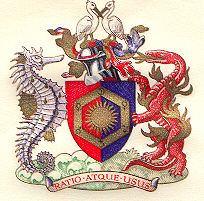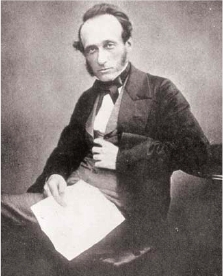Related Research Articles

Charles Hatchett FRS FRSE was an English mineralogist and analytical chemist who discovered the element niobium, for which he proposed the name "columbium".

The Royal Institute of Chemistry was a British scientific organisation. Founded in 1877 as the Institute of Chemistry of Great Britain and Ireland (ICGBI), its role was to focus on qualifications and the professional status of chemists, and its aim was to ensure that consulting and analytical chemists were properly trained and qualified.
The Society of Public Analysts was formed in the United Kingdom in 1874 and subsequently became the Society for Analytical Chemistry. It was incorporated in 1907.
The Manchester Literary and Philosophical Society, popularly known as the Lit. & Phil., is one of the oldest learned societies in the United Kingdom and second oldest provincial learned society.

William Thomas Brande FRS FRSE was an English chemist.
The Bakerian Medal is one of the premier medals of the Royal Society that recognizes exceptional and outstanding science. It comes with a medal award and a prize lecture. The medalist is required to give a lecture on any topic related to physical sciences. It is awarded annually to individuals in the field of physical sciences, including computer science.
This is a list of Civic Sheriffs and High Sheriffs of the County of the City of Bristol, England.
The Smeatonian Society of Civil Engineers was founded in England in 1771. It was the first engineering society to be formed anywhere in the world, and remains the oldest. It was originally known as the Society of Civil Engineers, being renamed following its founder's death.
The High Sheriff of Louth was the Crown's representative for County Louth, a territory known as his bailiwick. Selected from three nominated people, he held his office for the duration of a year. He had judicial, ceremonial and administrative functions and executed High Court Writs.
John Thomas Cooper (1790–1854) was an English chemist notable as a lecturer, chemical supplier and chemical analyst, at a time when interest was burgeoning in chemistry as a discipline of study and application.
The Tilden Prize is an award that is made by the Royal Society of Chemistry for advances in chemistry. The award was established in 1939 and commemorates Sir William A. Tilden, a prominent British chemist. The prize runs annually with up to three prizes available. Winners receive £5000, a medal and certificate.
The sheriff of the City of Cork is the court officer responsible for the enforcement of civil judgments in Cork county borough. The current sheriff is a solicitor, Martin A Harvey. Sheriffs earn their fees from poundage (commission). Before 1842 two sheriffs were voted into office annually by the freemen of the city. After that time, the power of appointment of a single sheriff per year was vested in the crown.

Robert Warington FRS was an English chemist considered the driving force behind the creation of the world's first enduring chemistry society, The Chemical Society of London, which later became the Royal Society of Chemistry.
The Queen's Birthday Honours 1899 were announced on 3 June 1899 in celebration of the birthday of Queen Victoria. The list included appointments to various orders and honours of the United Kingdom and British India.
Henry Hennell FRS was an English chemist.
Robert Warington, Jr. was an English agricultural chemist, known for his research and publications on the chemistry of phosphates and nitrates in agricultural soils.
References
- ↑ "Archived copy" (PDF). Archived from the original (PDF) on 2015-09-05. Retrieved 2015-07-29.
{{cite web}}: CS1 maint: archived copy as title (link) - ↑ Rayner-Canham, Marelene; Rayner-Canham, Geoff (2003). "Pounding on the Doors: The Fight for Acceptance of British Women Chemists" (PDF). Bulletin for the History of Chemistry. 28 (2).
- ↑ Brock, William H (2011). The Case of the Poisonous Socks: Tales from Chemistry. Royal Society of Chemistry. pp. 67–73. ISBN 9781849733243.
- ↑ "RSC Charter and By-laws" (PDF). Retrieved 14 June 2018.
- ↑ "Memoirs and Proceedings, Chemical Society". Proceedings of the Chemical Society of London. 1: A001. 1842. doi:10.1039/MP842010A001.
- ↑ A list of the Officers and Members of the Chemical Society of London. London. 1843.
- ↑ Hunt, L.B. (1843). "William John Cock". Platinum Metals Review. 27 (3): 129–132.